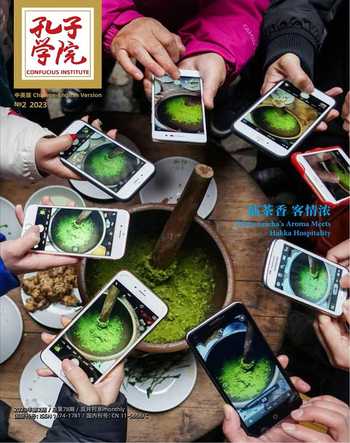如何介绍南昌Teaching: Introducing Nanchang to International Students
涂纳


每年南昌大学组织孔子学院学生来华参加夏、冬令营或短期汉语课程的时候,作为本地教师,我都会为来自不同国家的外国学生介绍英雄城南昌。对于大部分外国人来说,南昌并不像北京、上海、广州那么知名,所以我在介绍南昌之前,先会问学生一个问题:“南昌是什么颜色的?”然后让学生看一段我精心挑选的城市宣传片。学生一般来说会有一些初级汉语的基础,可以说出简单的汉语颜色词语,所以往往积极用自己会的词语来回答问题,即便是毫无汉语基础的同学也会用英语与我进行互动。之后,我会继续问为什么他们觉得南昌是这个颜色的,视频里的南昌给他们什么样的印象。接下来我再从绿色、红色、古色这三个方面来整体介绍南昌的生态环境、革命传统和悠久历史。我会特意提醒他们并没有一种颜色叫“古色”,中国有个成语叫“古色古香”,意思是富有古代的色彩和情调。
Each year, Nanchang University hosts summerand winter camps, as well as other short-termlanguage learning programs, for internationalstudents from Confucius Institutes. As a local teacher,I have the privilege of introducing my hometown tothem. To many of the students, Nanchang may notbe as well-known as first-tier cities such as Beijing,Shanghai, and Guangzhou. So, I will always start myclass with a question: “What color is Nanchang?”And then, I will invite the students to watch a citypromotion video that Ive carefully chosen. As themajority of the students are already beginner-levelChinese learners, they can answer the question usingbasic color words, and those who dont speak Chinesewill respond in English. After this, I will continueto ask, “Why do you think Nanchang is this color”and “What impression does the Nanchang city in thevideo give you”. After listening to their responses,I will give them an overall introduction to the city,highlighting Green Nanchang (ecosystem), RedNanchang (revolutionary heritage), and “AncientColor” Nanchang (time-honored history). I willexplain to the students that unlike green and red,ancient color is not a color term in Chinese, but we do have a four-character expression in Chinese, 古色古香 (guse-guxiang, meaning ancient color and ancientfragrance), to describe something that has an classicaland traditional charm.
在學生对南昌有了一个大致的印象以后,我再从地理位置、气候、语言、饮食习惯、旅游景点等方面对南昌进行详细的介绍。其实这些因素都是相互关联、相互影响的,比如地理位置决定了这个地方的气候特征,而气候特征又对当地的语言及当地人的饮食习惯产生深刻影响。在给学生介绍时,如果把这些内在的关联讲清楚,他们便很容易理解,也会对这个地方产生极大的兴趣,希望能够亲眼去看一看。当然,我也会向学生介绍我工作的南昌大学,用我自己日常积累的照片向他们展示当代中国大学生活和南昌大学在华留学生的学习与生活情况。
Once they have a general idea about the city, Iwill provide a more detailed and multi-dimensionalintroduction to it. This will include information on thecitys geographical location, climate, dialects, culinarytraditions, tourist attractions, and other factorsthat are all intricately interconnected. For instance,Nanchangs geographical location determines itsclimate, which continues to shape the local dialects andculinary traditions. When such intrinsic connectionsare explained, students will gain a more in-depthunderstanding of the city. This can pique their interestin visiting and experiencing the city firsthand. I willalso introduce Nanchang University, where I work, byshowcasing photos of the campus life of our Chineseand international students.
每个城市都有自己的特点,有区别于其他地方的独特气质,它们如同外国学生了解中国的一扇扇窗口。我们在向学生介绍城市的时候,一定要紧贴该城市内在的特点,切勿一味地追求高大上而使我们的讲解流于表面,应该以小见大,多讲讲学生喜闻乐见的内容,让我们的中国城市在学生的脑海里鲜活起来、生动起来。
Every city in China has its own distinct featuresthat make it a unique window to showcase the countryto the world. As such, when introducing a city tointernational students, its important to highlight themost special and intrinsic qualities, rather than simplyproviding superficial, generic, and homogeneousinformation. By showing the mosaic of the city andsharing fascinating stories, we can help create a vibrantand lasting impression of the city among internationalstudents.

